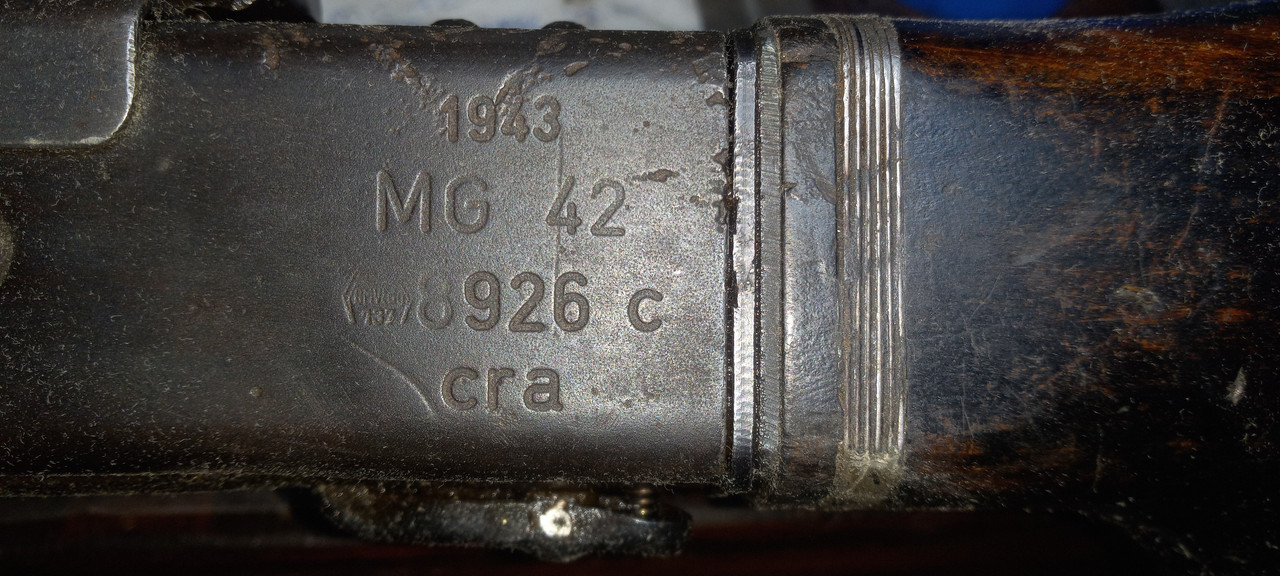About the semi MG34 shown:
1. It's a Pirate reweld, and needed more work than a typical reweld. Welds do not blue (IIRC he used 308S)
2. The pre-1938 guns used the machined top cover, as shown. Of course, replacement parts were whatever you could get your hands on.
3. The stock is the 2nd version with metal tips, which are hard to find and expensive. The first version was also bakelite, but prone to breakage.
4. The bipod is a very tough to find early version with "short" reinforcements
Prices for MG34 kits go from a low on postwar "dot" and increase with age; "dot" kits (with exceptions) don't command the price of other assembler's kits. All production was moved to "dot" in 1943, so all 1943 and later MG34 are "dot". Figure too, pre-1943 guns were lost by the hundreds of thousands during Stalingrad and the retreat, so non-"dot" guns/ kits are at a premium. Back to "dot" when the other factories switched to MG42 in 1943, all of the surplus went to "dot"- a HUGE volume of surplus, particularly bipods, top covers, feed trays, barrels. So many "dot" guns all the way to the end were compiled with various manufacturer's leftovers. This is demonstrated well by the 1943 and 1944 shipments to Portugal, which are as they left the factory; the barrels are rarely "dot" but instead from all previous suppliers.
About the MG42 shown:
1. "last ditch" 1945 made by Maget in Berlin; code "SM" (1945) "svq" (Maget)
2. The torched kit was in otherwise new condition. That's because it didn't work, too many flaws. I suspect it was set aside.
3. Obviously BRP semi parts
4. The Russians overran the factory in Berlin on 30 April, however the feeder factory that supplied the receiver was bombed to oblivion by the Americans on 03 April 1945. So these were made in Berlin either NLT early April, or made from receivers that were probably rejects (as, I believe, was this one.)
5. The bipod is also "last ditch" and simplified
6. Note the color of the receiver. This is not in the white, nor is it paint, nor blasted- it's the finish from the factory. Blueing had become unavailable (and AFAIK no MG42 were "parked") so it was finished in what some call "clear phosphate." It is NOT clear, it's just close to the color of bare metal. There's a thread here on that finish, though it has yet to be confirmed what it is.
I gotta get around to doing a photo expose on the 1942 vs 1945 MG42. Most people don't realize how many changes were made, nor that their gun/ kit isn't even close to how it left the factory.
![Image]()





